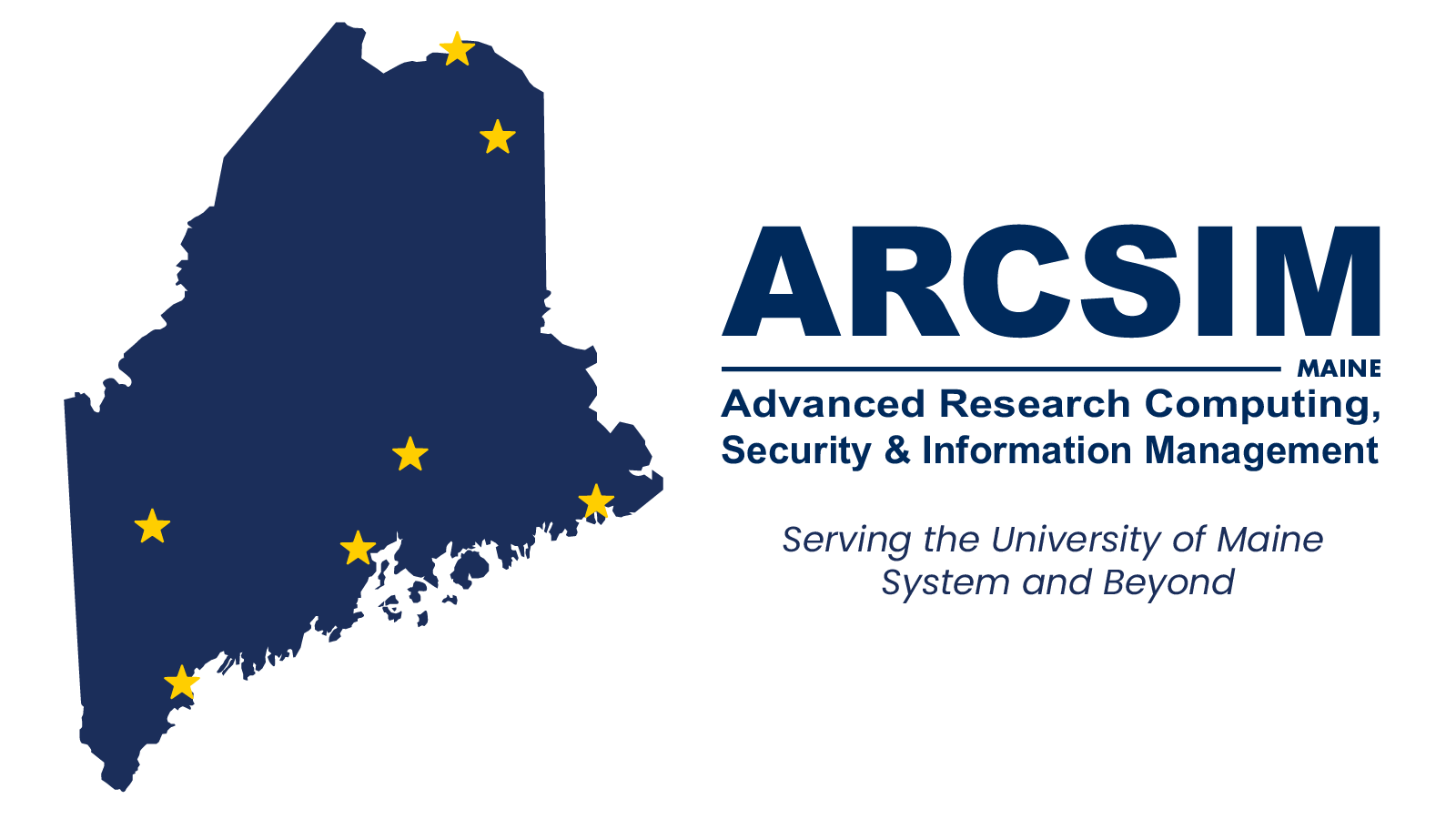
ARCSIM approaches five years and expands services to entire UMS research community
The research enterprise at the University of Maine has experienced rapid growth in recent years, and with that growth comes accompanying computing, data security, and operational needs. The Advanced Research Computing, Security, and Information Management (ARCSIM), led by Director Shane Moeykens, has been taking steps to meet these needs by further expanding the research computing resources and related services, and making them available to the University of Maine System faculty, staff, and students. As part of UMaine’s Coordinated Operating Research Entities (CORE), ARCSIM plays a crucial role in enabling research capacity growth, and its services are available to the entire University of Maine System (UMS).
Across disciplines, demand for high-performance computing (HPC) has significantly increased. To meet this need, ARCSIM has established strategic partnerships with national centers and other organizations over the last five years. For example, partnering with the Ohio Supercomputing Center (OSC) allows Maine researchers to access the massively parallel computing systems often needed by researchers at an R1 institution like UMaine. Centers like OSC are not new. Nor are hybrid computing environments, where researchers have a plethora of remote and locally-based hardware solutions available to support their work. This type of access model extends back 25+ years in the private sector, but introducing this type of model in academia, crossing state boundaries, was at minimum very uncommon when first proposed.
Highlighting the innovative aspects of the approach, Laura Jackson, the HPC services leader on the ARCSIM team, became the first non-Ohio-based OSC Campus Champion, complementing her role as an NSF ACCESS Campus Champion. Strategic relationships open up new opportunities for Maine researchers, including access to the scales of hardware that simply do not exist in Maine given the rural nature of our state and the inherent costs for building and maintaining these types of systems. Hybrid computing environments can reduce capital expenditure (CAPEX) and operating expense (OPEX) costs while simultaneously providing greater reliability and scalable compute access critical to meeting aggressive project deadlines.
While OSC may be a suitable solution for many, UMS has diverse computing needs. ARCSIM is advancing other computing solutions, like a new GPU cluster housed in Barrows Hall at UMaine, and is always pursuing new opportunities to be knowledgeable and proficient with leading computing options, such as Amazon Web Services, Google Cloud Platform, and others. This approach helps ARCSIM to be a one-stop shop for recommendations that best fit the needs of each researcher and project.
The rise in computing activity has increased the need for improved security and awareness to combat the persistent threats to research infrastructure and data. This sentiment is clearly reflected by the presence of heightened security requirements for external research funding. Melissa Kimble, an ARCSIM Senior Research Data Security Analyst, tracks the newest in security regulations and threats, and is an active member of leading cybersecurity groups. Integral to her work is her partnership with the Information Security Office, led by the UMS Chief Information Security Officer, John Forker. This joint effort recognizes that cybersecurity must be approached collectively as a system. A collaborative approach helps our academic community manage a dynamic set of evolving requirements, such as the emerging National Security Presidential Memorandum 33 (NSPM-33) directive, which will impact all US universities who are engaged in at least $50M annual Federal research funding. Based on the draft requirements, universities will have a year from publication of the final requirements to implement and self-certify in order to receive new, or maintain current Federal science and engineering support. The University of Maine exceeds this threshold and is currently engaged in the preliminary planning for this upcoming directive. For institutions operating below this threshold, there may still be implications, considering a single research grant may span multiple campuses within UMS, even when only one is above the $50M threshold.
ARCSIM is changing how research happens through more than one approach. It recently expanded access to REDCap, a secure survey and database system, which gives researchers new tools to conduct online surveys. Providing the community with the tools it needs is central to ARCSIM’s mission. This can be as simple as making quality of life improvements. For instance, ARCSIM and UMS:IT have worked together to streamline how non-standard research computing devices are purchased at UMaine, ensuring that faculty and students have access to the technology they need to innovate.
ARCSIM’s focus is not restricted to the researchers themselves. A similarly important charge for ARCSIM is improving the productivity of other support units, a strategy which indirectly benefits the research community. For example, ARCSIM launched Kuali with UMaine’s Office of Research Administration, which will help UMS more efficiently process the record number of awards and research dollars coming in. It is also helping UMS better quantify itself. ARCSIM advances projects to produce and track research analytics, which play an important role in decision making, reporting, and positioning for future research success.
Research computing, security, and information management will continue to change and transform over the years. ARCSIM is dedicated to making those changes happen smoothly, while providing each researcher with the resources and support needed to best meet their individual project requirements.
